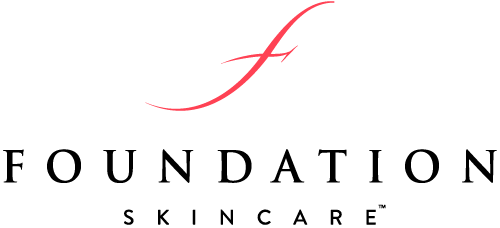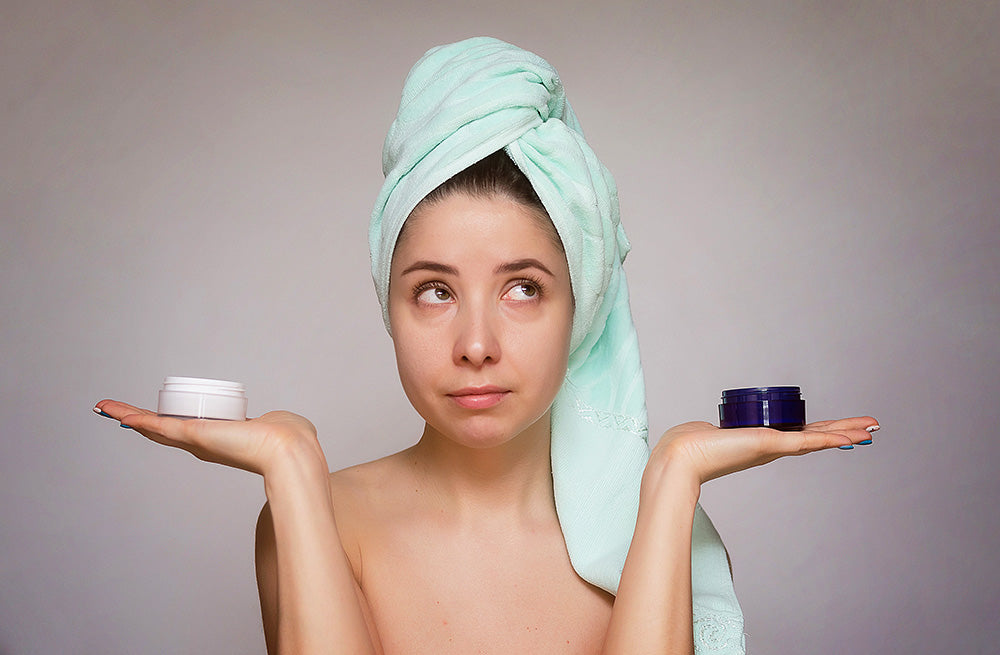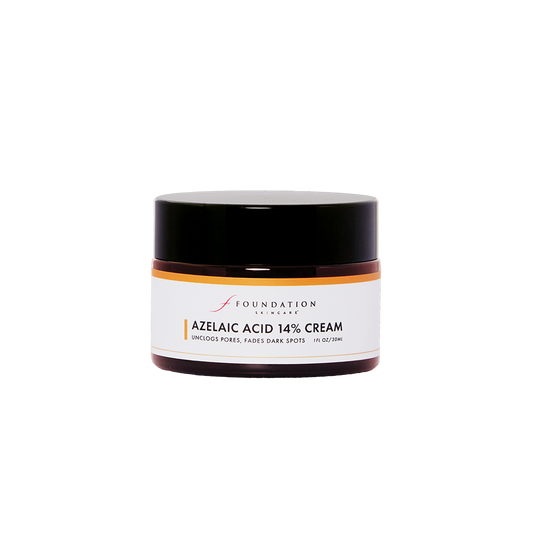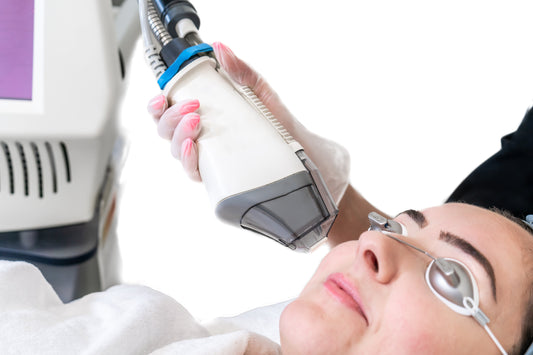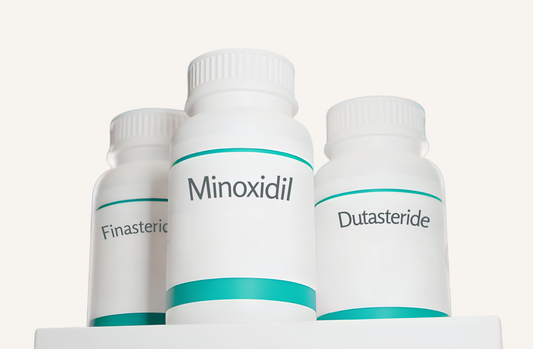Most over-the-counter products with azelaic acid, including Paula’s Choice® and The Ordinary®, do not contain more than 10% of the active ingredient. For some individuals, this concentration is not enough to produce real results when it comes to fading dark spots and clearing up acne.
To get a higher percentage of the active ingredient, many people turn to prescription azelaic acid, which typically contains 15-20% of the active ingredient. However, some individuals experience dryness and irritation with the higher concentration. At Foundation Skincare, we find that 14% is just the right amount to make a significant improvement in skin health without causing irritation. Read on to find out more about azelaic acid benefits and how to choose the right strength.
What is Azelaic Acid?
Azelaic acid is a naturally occurring dicarboxylic acid commonly found in wheat, barley, and other grains. It is also produced by a type of fungi on the skin. With potent antimicrobial, antioxidant, and anti-inflammatory properties, azelaic acid is highly effective at neutralizing free radicals, which helps to reduce acne breakouts, calm irritation, and slow the buildup of protein on the skin.
At the same time, azelaic acid functions as a tyrosinase inhibitor.1 Tyrosinase is an enzyme responsible for melanin synthesis, which produces pigment in the skin. By inhibiting it, azelaic acid helps to fade hyperpigmentation and brighten skin.
There is some evidence that azelaic acid may also be useful in reducing signs of premature aging. When combined with other skin-nourishing nutrients like vitamins C, E, and A, azelaic acid has been clinically proven to improve skin elasticity and flexibility, reduce wrinkles, and even out skin tone.2
Azelaic Acid: Different Strengths
When it comes to choosing between azelaic acid strengths, the decision may depend on your specific skin concerns and needs.
Prescription-strength products may seem like the better choice because their concentration is higher, but this isn’t always the case, especially if you have sensitive skin. At the same time, using a low concentration may not have a noticeable impact. Here is some guidance on how to choose the right concentration for your skin.
Related Articles: What Percentage of Azelaic Acid Is Most Effective?, What It Is & Best Ways to Use It, Azelaic Acid Gel vs. Cream: Which Is Best for You?
Benefits of 10% Azelaic Acid
Dermatologists agree that prescription-strength products are often better than OTC versions because they have higher concentrations of azelaic acid, but a 10% strength can still be effective for some users.3 Most of the research centers on higher prescription-strength concentrations, but we did find some positive findings on the lower percentages.
For instance, in one 2021 study, patients with mild to moderate acne using azelaic acid gel 10% saw a success rate of 36.51% after eight weeks compared to 30.37% in those using azelaic acid cream 20%.4 The lower concentration also had a higher safety profile with one patient using the 20% cream experiencing an adverse event.
Researchers explained that the benefits of using a lower concentration had more to do with avoiding such adverse events like burning, stinging, itching, dry skin, erythema, and irritation, which has been seen in higher concentrations.
Azelaic Acid 14% Cream
• Brightens skin, fades brown spots
• Unclogs pores, improves texture
Benefits of 14% Azelaic Acid
Though the study above illustrated that the 10% concentration of azelaic acid was slightly more effective and generally safer than the higher 20% concentration cream in treating acne, it does not appear to be as effective at treating other skin conditions like hyperpigmentation and premature aging. Instead of opting for 20% and risking the chance of experiencing side effects, it is recommended to use a slightly higher concentration of 14%.
Most studies on the slightly higher concentration use products with 15% azelaic acid, but this concentration is only available with a prescription, which is why 14% is ideal in OTC products.
In one 2021 study, patients using azelaic acid 15% experienced a significant decrease in inflammatory lesions and erythema associated with rosacea.5 No irritation or relevant side effects were noted. Patients using 15% azelaic acid also had a significant reduction in acne scarring after using the product for six months.6 And higher concentrations of azelaic acid have also proven to be useful in reducing wrinkles and fine lines as shown in one 2022 study.7
Key Differences
The key differences between azelaic acid 10% and azelaic acid 14% is that the higher concentration treats more conditions. However, using a higher concentration (especially 20%, a typical prescription strength) may cause side effects, like irritation. Most higher concentrations above 14% also require a visit to a dermatologist’s office for a prescription.
Benefits of 10% azelaic acid:
- Effective in reducing mild to moderate acne
- Less irritation than 20% azelaic acid products
Benefits of 14% azelaic acid:
- Effective in treating acne, acne scarring, hyperpigmentation, rosacea, and premature aging
- Highest percentage available without a prescription
- Less irritating than 20% concentrations, especially when combined with calming and hydrating ingredients like aloe leaf juice and jojoba seed oil (found in Foundation Skincare’s Azelaic Acid 14% Cream)
How to Use Azelaic Acid
Foundation Skincare’s Azelaic Acid 14% Cream is suitable for individuals dealing with acne, rosacea, hyperpigmentation, and premature aging. Dermatologist formulated with a cream base, the product can be used daily without irritating skin like so many of the serums and gels. Other ingredients like jojoba seed oil, avocado oil, and aloe leaf help to ensure a soothing application. With its medical-grade 14% concentration, you may find that you have to build up to using twice daily as your skin adjusts. It also layers well with other products in the Foundation Skincare collection. We recommend the following routine to get started:
Morning:
- Cleanse skin and pat dry.
- Apply any other serums, such as Niacinamide Lotion 10%, which calms skin and contributes to DNA repair. Azelaic acid also pairs well with Vitamin C Lotion 20% to increase firmness and elasticity while brightening skin.
- Moisturize with Hyaluronic Acid Lotion, which works as a magnet for skin hydration.
- Apply a thin layer of Azelaic Acid 14% Cream to kill bacteria and reduce redness and inflammation.
- Protect with minimum SPF 30+: (50 preferred) mineral-based broad spectrum sunscreen.
Evening
- Cleanse and apply Niacinamide Lotion 10%.
- Moisturize and restore with Night Renewal Cream with 2% Granactive™ Retinoid to improve skin texture.
You may also want to consider using a nutritional supplement to support your skin health from the inside out. If your main concern is hyperpigmentation, try Foundation Skincare’s Pigmentation Defense to further improve visible signs of skin discoloration with its custom blend of antioxidants, vitamins, and herbs. Or, use Foundation Skincare’s Spectrum supplement to support skin renewal and prevent further sun damage through plant-based antioxidants and key vitamins like vitamin D and oral niacinamide.
Choosing the Right Strength for You
No two people have the same skin concerns. Starting with a 14% strength is an ideal way to find out if azelaic acid is right for your skin. It gives you the advantage of a higher concentration of the active ingredient without needing a prescription, but is formulated to be gentle enough for even the most sensitive skin.
Learn more about the benefits of azelaic acid and find more tips on how to care for your skin in the FS Journal.
References:
-
https://www.sciencedirect.com/science/article/abs/pii/S0022286020315544
-
https://onlinelibrary.wiley.com/doi/10.1111/jocd.15359
-
https://www.nbcnews.com/select/shopping/azelaic-acid-skin-ncna1236351
-
https://www.ncbi.nlm.nih.gov/pmc/articles/PMC8073278/
-
https://www.ncbi.nlm.nih.gov/pmc/articles/PMC8252084/
-
https://www.ncbi.nlm.nih.gov/pmc/articles/PMC9975535/
-
https://onlinelibrary.wiley.com/doi/10.1111/jocd.15359
